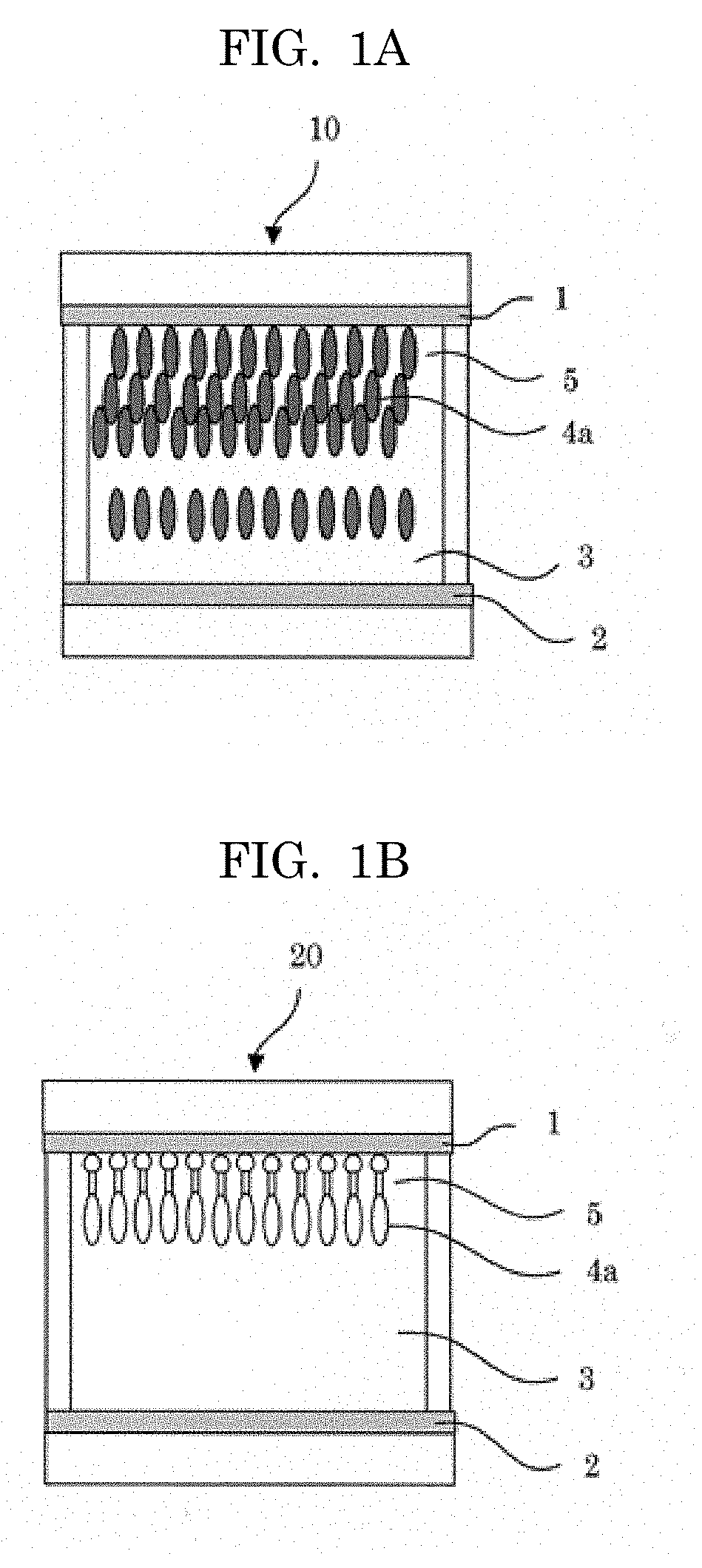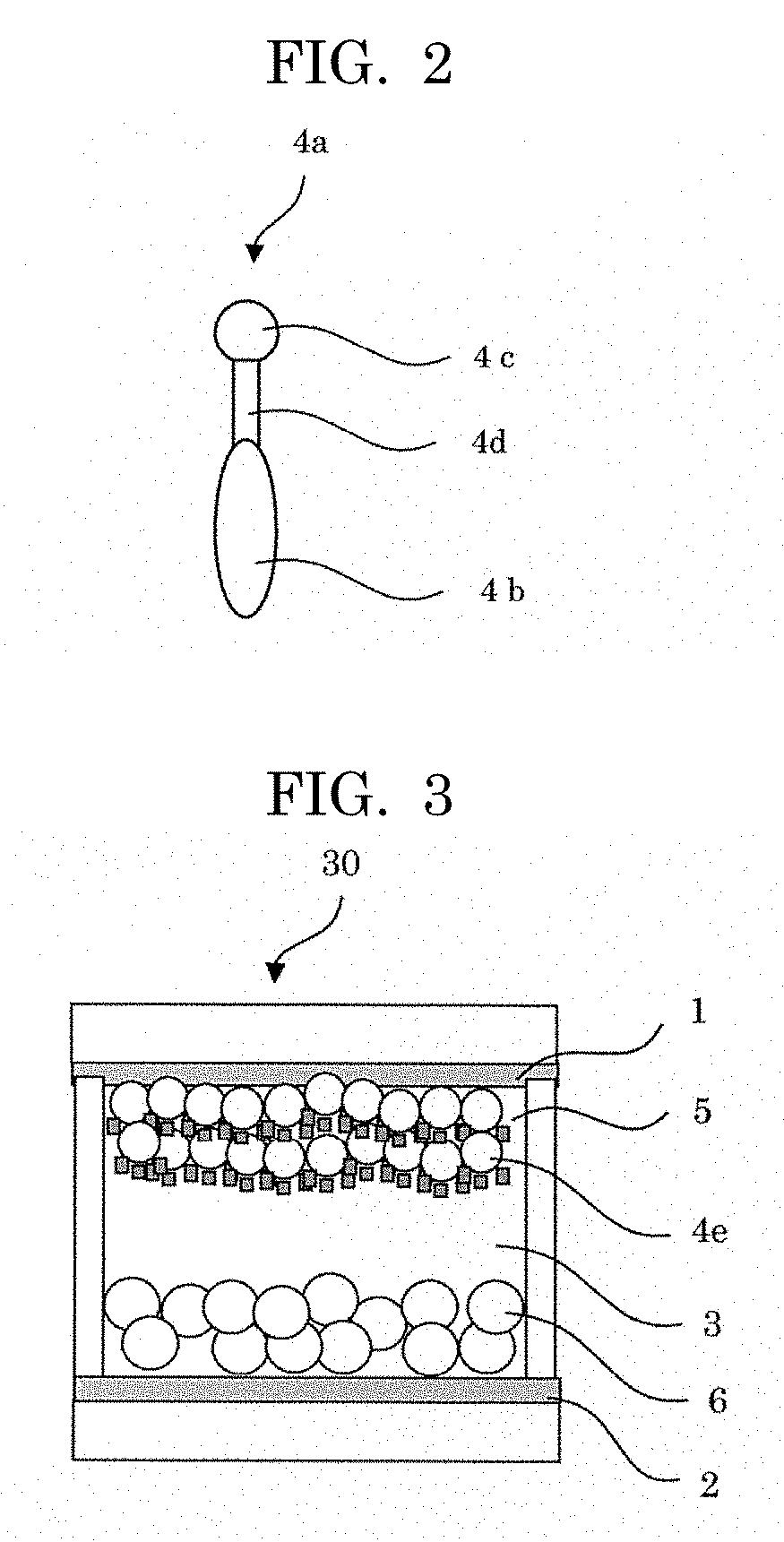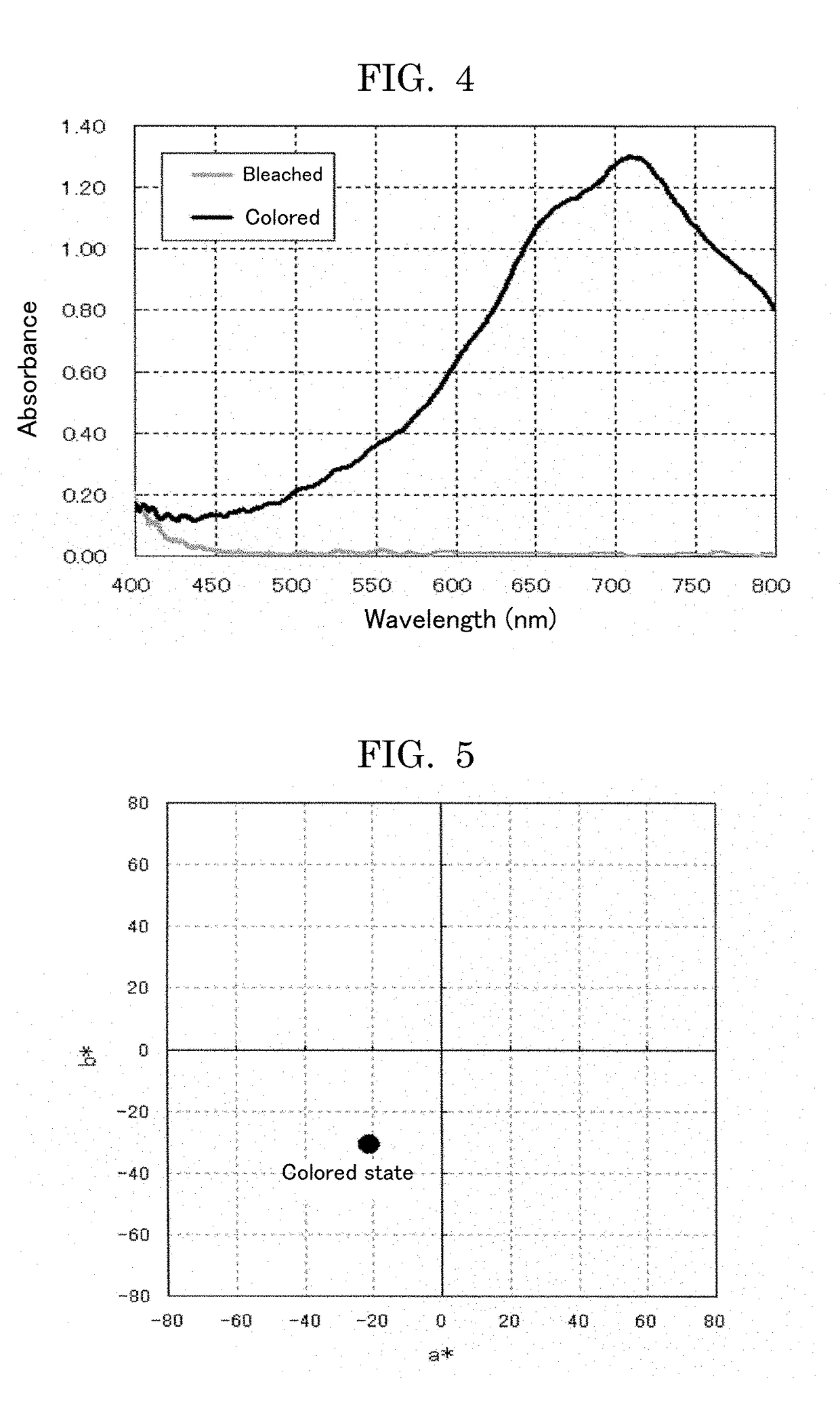Electrochromic compound, electrochromic composition, and display element
a technology of electrochromic composition and compound, applied in the direction of instruments, non-metal conductors, conductors, etc., can solve the problems of poor visibility, difficult to use electronic paper devices, and difficulty in multi-color display with maintaining white reflectivity and contrast ratio, etc., to achieve the characteristic of sharp light absorption spectrum and less color remaining
- Summary
- Abstract
- Description
- Claims
- Application Information
AI Technical Summary
Benefits of technology
Problems solved by technology
Method used
Image
Examples
example 1
[0092]According the following synthesis flows (a) and (b), the electrochromic compound represented by the structural formula (21) was synthesized.
Synthesis of Intermediate Product (21-1)
Synthesis Flow (a)
[0093]
[0094]A 100 mL three-necked flask was charged with 0.594 g (3.00 mmol) of 2,6-dichloroquinoxaline, 1.72 g (8.4 mmol) of 4-(4, 4, 5, 5-tetramethyl-1,3,2-dioxaborolan-2-yl)pyridine, 0.055 g (0.060 mmol) of tris(dibenzylideneacetone)dipalladium(0), and 0.053 g (0.144 mmol) of triicyclohexylphosphonium tetrafluoroborate, and was purged with argon gas. Thereafter, to the flask, 11 mL of 1,4-dioxane and 8 mL of a 1.27M-tripotassium phosphate aqueous solution, which had been degassed with argon gas, were added in this order, and the resultant was subjected to reflux for 4 hours at 100° C. Thereafter, the reaction solution was cooled to room temperature, and chloroform and a saturated salt solution were added to the reaction solution. The resulting solution was transferred into a sep...
example 2
[0106]An electrochromic compound [the compound represented by the structural formula (1) listed earlier] was synthesized by allowing the intermediate product 22-1 synthesized in Example 1 to react with 2 equivalents of ethyl bromide.
[0107]Next, in 2,2,3,3-tetrafluoropropanol, 1% by mass of the synthesized electrochromic compound [the compound represented by the structural formula (1)] and 5% by mass of tetrabutylammonium perchlorate serving as an electrolyte were dissolved, to thereby prepare an electrochromic compound solution. This electrochromic compound solution was enclosed in a cell prepared by bonding glass substrates each with an ITO electric conductive film in the size of 30 mm×30 mm (manufactured by GEOMATEC Co., Ltd.) together as a display substrate and a counter substrate via a spacer having a thickness of 75 μam, to thereby produce an electrochromic display element. The structure of the electrochromic display element is presented in FIG. 1.
[0108]When a voltage of 3 V wa...
example 3
[0109]An electrochromic compound (Ex.-3) was synthesized in accordance with the following scheme.
(a) Synthesis of Intermediate Product (1,5-dimethoxy-2,6-di(4-pyridyl)naphthalene)
[0110]A 50 mL-flask was charged with 0.658 g (1.90 mmol) of 2,6-dibromo1,5-dimethoxynaphthalene, 1.560 g (7.61 mmol) of 4-(4,4,5,5-tetramethyl1,3,2-dioxaborolan-2-yl)pyridine, 70 mg (0.076 mmol) of tris(dibenzylideneacetone)dipalladium(0), and 67 mg (0.182 mmol) of tricyclohexylphosphine tetrafluoroborate, and then purged with argon. Thereafter, 2.16 g of tripotassium phosphate, 7 mL of water, and 7 mL of 1,4-dioxane were added to the flask, and the resulting mixture was heated and stirred for 18 hours at 95° C. After cooling the reaction solution to room temperature, the precipitated solids were collected through filtration, and then were washed with ethanol and ethyl acetate, to thereby obtain 0.543 g of a target product as colorless crystals.
(b) Synthesis of Electrochromic Compound (Ex.-3)
[0111]A 25 mL-f...
PUM
| Property | Measurement | Unit |
|---|---|---|
| time | aaaaa | aaaaa |
| specific surface area | aaaaa | aaaaa |
| room temperature | aaaaa | aaaaa |
Abstract
Description
Claims
Application Information
 Login to View More
Login to View More - R&D
- Intellectual Property
- Life Sciences
- Materials
- Tech Scout
- Unparalleled Data Quality
- Higher Quality Content
- 60% Fewer Hallucinations
Browse by: Latest US Patents, China's latest patents, Technical Efficacy Thesaurus, Application Domain, Technology Topic, Popular Technical Reports.
© 2025 PatSnap. All rights reserved.Legal|Privacy policy|Modern Slavery Act Transparency Statement|Sitemap|About US| Contact US: help@patsnap.com



